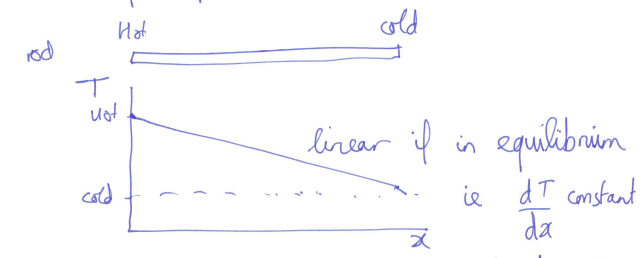PX154 - B4 - heat transfer mechanisms
[YF 17.6]
conduction
- important one for solids, occurs in liquids too
- no mass transport for solids
- consider heat along a 1D rod

- heat flow/flux:
- where,
-cross-sectional area
-temperature gradient 
-thermal conductivity
- for copper/silver,
- for glass,
- for diamond,
- for expanded polystyrene,
- need the negative sign as heat flows from hot to cold - heat conduction can be via electrons in an electrical conductor and via vibrations of the atoms
examples of conduction
- case 1

- in equilibrium,
is the same in both materials, ie: - [YF 17.12 example]
- in equilibrium,
- case 2

is the same for both rods
total
- eg:

convection
- heat flow arising from motion of a fluid
radiation
- a surface at temperature
will radiate at a power proportional to the surface area and :
- all bodies emit and absorb radiation
- we will need a quantum theory to describe it properly - stefan-boltzmann law for blackbodies